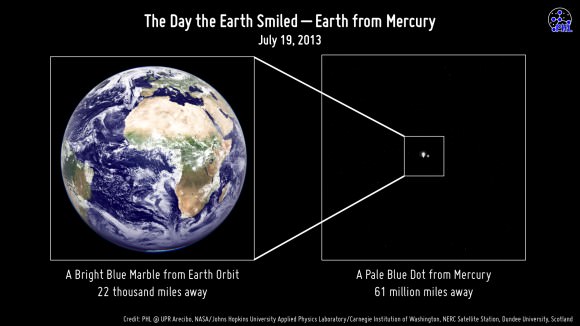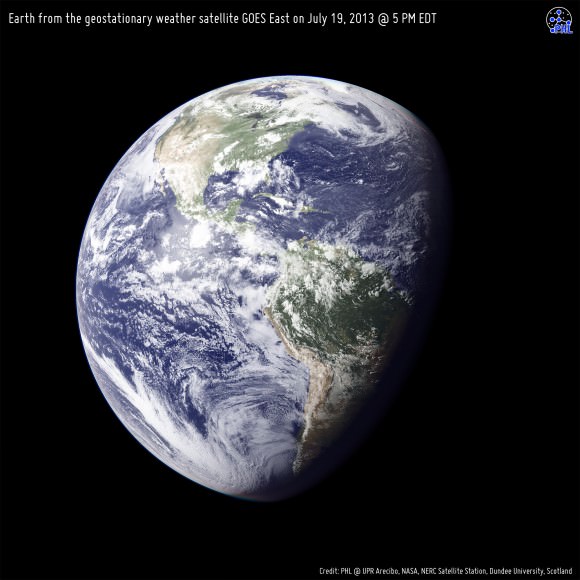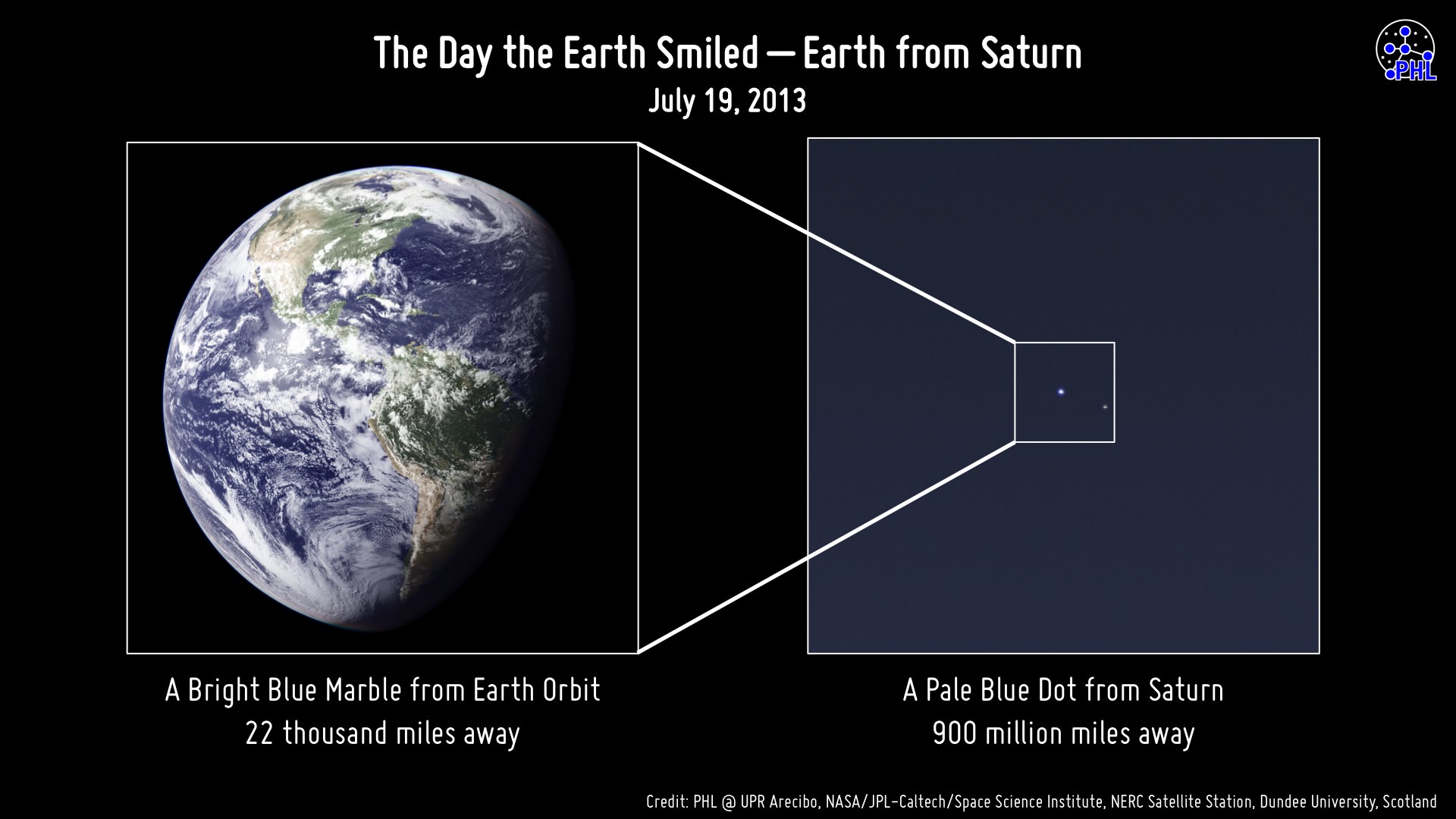So along with the rest of the world, you smiled. You waved. You went outside on July 19, wherever you were, and looked upwards and out into the solar system knowing that our robotic representative Cassini would be capturing a few pixels’ worth of photons bouncing off our planet when they eventually reached Saturn, 900 million miles away. But did Cassini actually capture any photons coming from where you were? The image above will tell you.
Assembled by the Planetary Habitability Laboratory at the University of Puerto Rico at Arecibo (where the enormous 305-meter radio telescope is located) this image shows what side of Earth was facing Cassini when its “pale blue dot” images were obtained, at approximately 22:47 UTC (Cassini time.)
Didn’t make it into Cassini’s photo? That’s ok… maybe MESSENGER had already caught you earlier that very same day:

Before Cassini took its images — several hours before, in fact — the MESSENGER spacecraft was holding some photo shoots of its own from 61 million miles in the other direction!
The image above shows the side of Earth that was facing Mercury on the morning of July 19, 2013, when MESSENGER was acquiring images in our direction during a hunt for any possible satellites of the innermost planet.
Earth was as bright (-4.8 magnitude) as the maximum brightness of Venus at the moment the image was taken from Mercury.
Of course, in both series of images specific details of our planet can’t be made out — Earth was barely more than a pixel in size (regardless of any bloom caused by apparent brightness.) Clouds, countries, continents, oceans… the entire population of our world, reduced to a single point of light — a “mote of dust suspended in a sunbeam.”
For both portrayals, high-resolution black and white images from the GOES East and Meteosat meteorological satellites were combined with color information from NASA Visible Earth to generate true-color images of our planet as it would have looked to each respective imaging spacecraft… if they had the impossibly-precise optics to resolve Earth from such distances, of course.
But it’s ok that they don’t… we can still use our imaginations.
Read more here on the PHL’s news release.

Image credits: PHL @ UPR Arecibo, NASA/Johns Hopkins University Applied Physics Laboratory/Carnegie Institution of Washington, NERC Satellite Station, Dundee University, Scotland. Thanks to Prof. Abel Méndez (PHL/UCR) for the heads-up on these.


Thank you Jason.
fabulous, regards from jakarta
There I am! Right there! Hi, Saturn!
I didn’t know exactly where to have the kids face, so I pointed to a spot a ways off from the sun, assuming Saturn was catching at least a mostly “full Earth”. So… if you “enhance” the .0000000000078 of a pixel we are in and could see us in my front yard in Pittsburgh, we’re probably looking the wrong way, but we’re there. 🙂
My wife was so put out by the way her hair looked in the photo she went out he next day and had it ‘done’
LMAO!
Something’s not quite right about that apparent view from Saturn. With Saturn having an elongation of slightly more than 90 degrees, half of the Earth should be in shadow…quite contrary to that presented. Additionally, that image has Saturn rather near transiting the meridian at that time for eastern US observers whereas it was further east in the sky. Hate being the bearer of bad news but a different satellite perspective would be more appropriate.
You said it yourself… with Saturn “slightly more than 90 degrees” (from a line drawn between the Earth and Sun – with Earth more than 90 degrees ‘ahead’ of Saturn’s position against the bg sky), Earth would indeed be ‘slightly more’ than half illuminated.
To the contrary…perhaps you don’t understand what elongation means? A full moon is near 180 degrees elongation, yet an observer on the moon would see a ‘new’ or unilluminated Earth. Saturn was near 97 degrees elongation so Earth is not quite yet 90 degrees ahead of Saturn…it has yet to reach quadrature. This happens near the 28th of July…on which day Saturn would see half of Earth illuminated and gradually increasing in apparent illumination until solar conjunction.